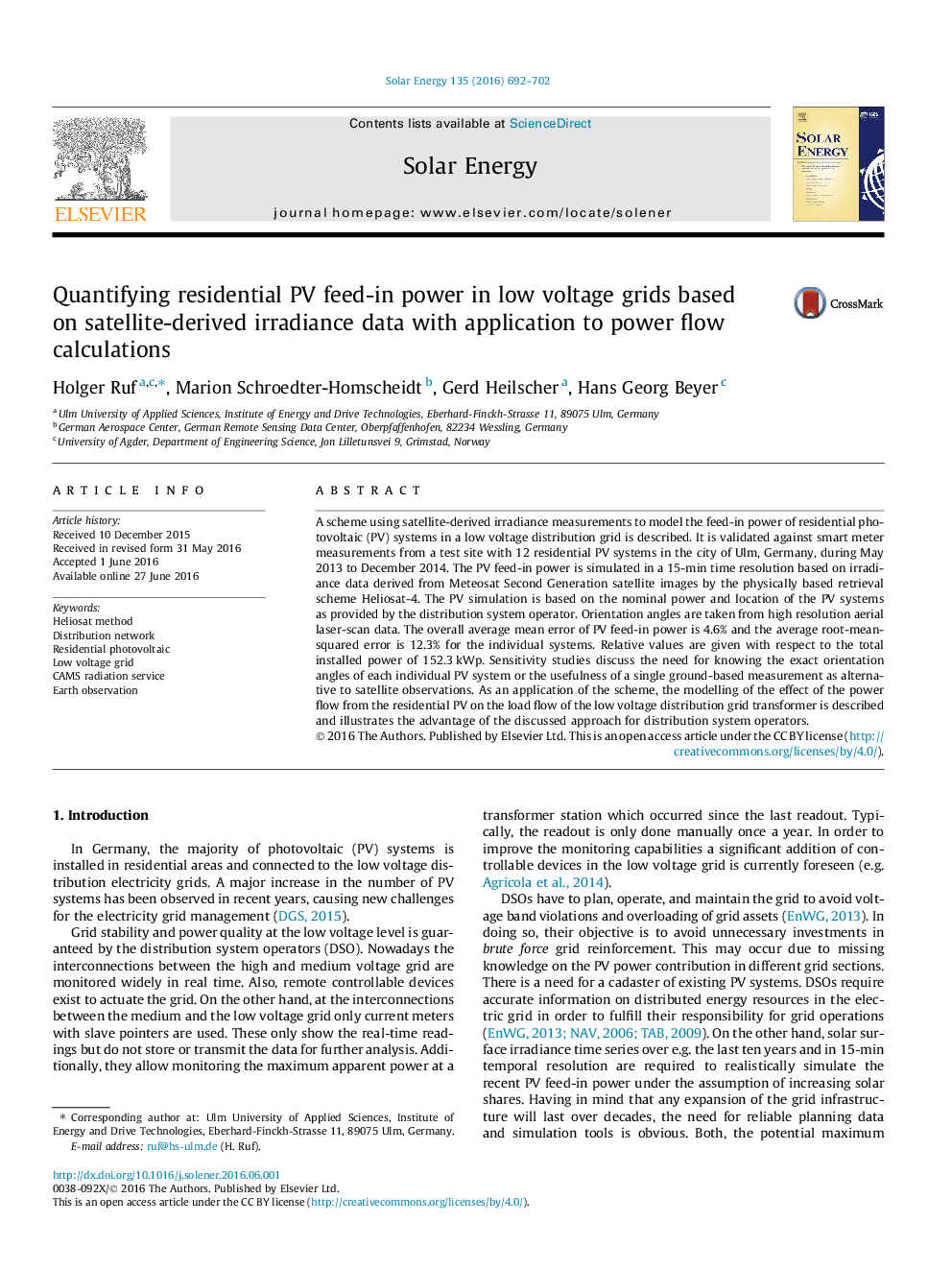| Article ID | Journal | Published Year | Pages | File Type |
|---|---|---|---|---|
| 7936866 | Solar Energy | 2016 | 11 Pages |
Abstract
A scheme using satellite-derived irradiance measurements to model the feed-in power of residential photovoltaic (PV) systems in a low voltage distribution grid is described. It is validated against smart meter measurements from a test site with 12 residential PV systems in the city of Ulm, Germany, during May 2013 to December 2014. The PV feed-in power is simulated in a 15-min time resolution based on irradiance data derived from Meteosat Second Generation satellite images by the physically based retrieval scheme Heliosat-4. The PV simulation is based on the nominal power and location of the PV systems as provided by the distribution system operator. Orientation angles are taken from high resolution aerial laser-scan data. The overall average mean error of PV feed-in power is 4.6% and the average root-mean-squared error is 12.3% for the individual systems. Relative values are given with respect to the total installed power of 152.3Â kWp. Sensitivity studies discuss the need for knowing the exact orientation angles of each individual PV system or the usefulness of a single ground-based measurement as alternative to satellite observations. As an application of the scheme, the modelling of the effect of the power flow from the residential PV on the load flow of the low voltage distribution grid transformer is described and illustrates the advantage of the discussed approach for distribution system operators.
Related Topics
Physical Sciences and Engineering
Energy
Renewable Energy, Sustainability and the Environment
Authors
Holger Ruf, Marion Schroedter-Homscheidt, Gerd Heilscher, Hans Georg Beyer,
